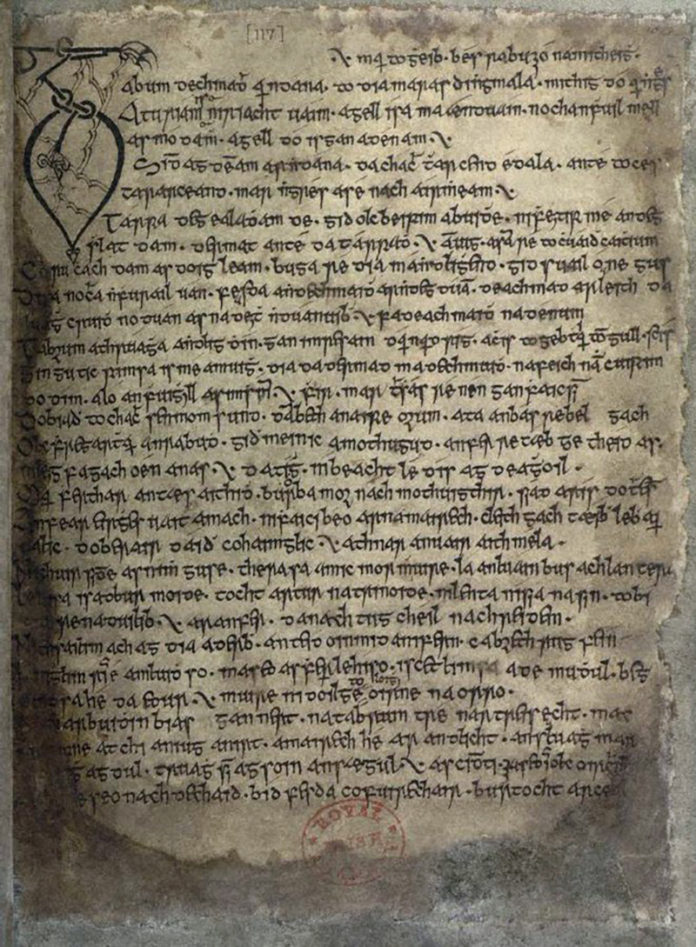
The Book of Fermoy, which is also known as the Book of Roche, went on display last week in the Royal Irish Academy in Dublin.
Unfortunately, due to the measures taken by the Irish Government to curtail the spread of Covid-19, this particular display was a short-lived one.
However, Siobhán FitzPatrick, spokesperson for the Royal Irish Academy assured any interested individuals that the book would once again be on display in the near future.
“Usually a book will be on display for a week or so, and they are brought through on a cycle of roughly twelve weeks, so the Book of Fermoy will be back at another point,” she said.
The book, which is written in Irish, was compiled at Castletownroche, near Fermoy.
The authors of this tome worked across two centuries, between the 14th and 16th, to put the book together, and it contains family histories, historical tracts, mythological tales, and medical treatises, among other extracts.
Much of the material relates to the Roche family whose centre of power straddled Fermoy and its hinterland, as well as Cork City for many generations.
Local interest
Ms FitzPatrick explained that the Royal Irish Academy always encourages local groups or historians who are interested in any of the works or manuscripts that they retain, to contact the Academy.
“We would always encourage people who come from places that are connected to the books we hold to get in touch with us, if they would like to view the manuscript. We offer talks on the book too,” she said.
History
The book surfaced in modern history in 1858 when it was bought for £70 at an auction of William Monck Mason’s books. The consortium that purchased the book eventually deposited it in the Royal Irish Academy, which has held it since.
Over 100 years later, some restoration work was undertaken, and Roger Powell rebound the Book of Fermoy, at the princely cost of £2,200.
Much care was evidently taken in this restoration, and, according to the Royal Irish Academy, specially dyed vellum was used to match the colour tone. Such was the level of commitment to authenticity, that ‘cellulose-free sausage skin’ was employed to mend tears on pages.
A special sapele case was uniquely designed by Edward Barnsley to contain the Book of Fermoy.







